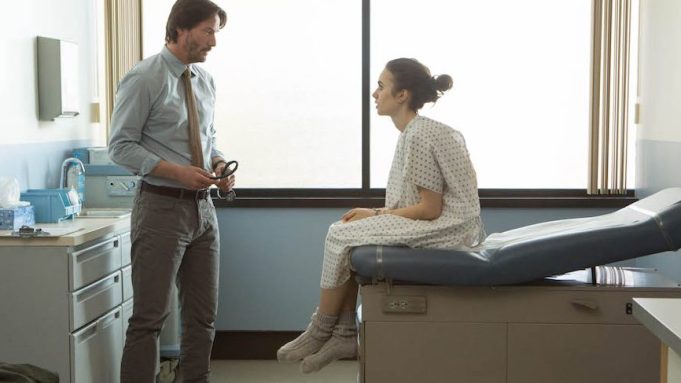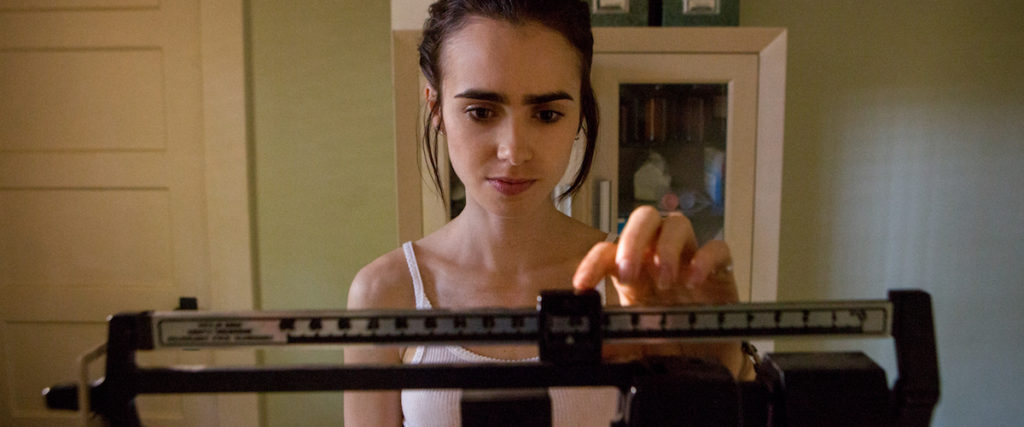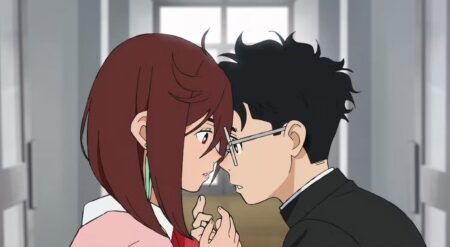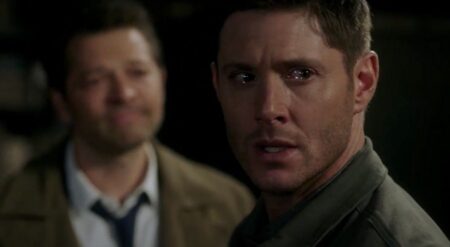Content Warning: This article discusses eating disorders and their rituals, as shown in the Netflix original film, To The Bone.
2017 was a life-changing year for me. It’s when I chose to leave behind my Ph.D. after dealing with unrelenting sexism and racism that was dismissed by the faculty. It’s when I started my podcast and ultimately planted the seed that would grow into this website. It’s also the year where my relapse into an eating disorder I thought I had recovered from stood like a specter following me everywhere I went. I desperately wanted control again; I wanted to be in control of my life, my path, and my weight. But my diet presented itself as the only way to do that. Then, I watched Netflix’s To The Bone, and I felt like I had been laid bare.
To the Bone opens with a content warning, but, more importantly, it also explains that those involved in the production of the film have past experience with eating disorders. Made by survivors, for survivors, the film is, as you can guess, extremely triggering. Directed and written by Marti Noxon, the film is a look into her own experiences with addiction and her own eating disorder. Additionally, Lily Collins, who plays the lead character, Ellen, brought her own experiences with eating disorders to the role. It was so triggering that I needed to watch it in parts.
I paused the film multiple times as a gnawing feeling grew in my stomach and made me feel uneasy and uncomfortable like something was crawling just under the surface of my skin. This level of discomfort was compounded by the fact that To the Bone shows is not just about the clinical presentation of eating disorders but also the behaviors of those struggling with them, known as rituals.
It shows how they cheat weigh-in days, how they indulge in the small but potent forms of over-exercising, and how they participate in the binge and purge cycles. Ultimately, I was worried it could be a blueprint for those looking to also perform these self-harming acts. But this idea of “thinspiration,” as we called it on Tumblr and MySpace back in the day, is directly confronted in the film.
Our lead character, Ellen, is a 20-year-old anorexic who is being put into recovery by her step-mother and, presumably, her father. Seeking help from a new therapist with nontraditional methods, she moves into a recovery house with others dealing with various eating disorders. We observe Ellen as she watches the lives of her housemates end, begin anew, and hover somewhere in between in a constant state of pain. But we also watch her as she undergoes therapy with her family.
To The Bone captures reality beyond food restriction.
Not only is Ellen dealing with the compulsive behaviors that force her to perform her anorexic rituals, but she also deals with immense guilt. She has to carry the knowledge of knowing that her anorexic art was used as “thinspiring” Tumblr posts by a young woman who died. This type of guilt adds another layer to the story, and it’s one that no one outside of those who have survived an eating disorder would understand.
Social media channels can serve as a dangerous communal tool to encourage others to engage in ritualistic dieting and other elements associated with eating disorders. I’ve been in those communities, I’ve moderated them, and I’ve lost friends in them. It’s a harsh reality that To the Bone doesn’t sugarcoat. The film acknowledges it, unmasks it, and forces viewers to understand the dangerous communities that we build to keep ourselves from getting better.
While this film may be seen as a glamorization to some, for me, it truly isn’t. In other media, eating disorders are reduced to small glamorized moments of weightloss. We see the main character’s diet-restriction escalate; maybe they take some caffeine pills to curb hunger and increase energy. We see a character pinching their sides in a fitting room, and, at most a fainting spell.
That said, it’s rare that the brutal toll these disorders take on a person’s body are shown. By sidestepping the insidious nature in the way eating disorders distort a patient’s identity and behaviors, media minimizes them. It’s these narratives that leave people to believe that to be cured of an eating disorder is to “eat a sandwich” and leads to the dismissal of those in danger.
But here, the narrative of showcasing the reality of eating disorders is coupled with and balanced by showcasing the pure fear and danger each of the characters is facing as their bodies deteriorate and they have to make the decision on whether or not they want to get better. Feeding tubes, bloodied nailbeds, protruding ribs, ashy skin, and the complications of prolonged starvation are shown in vivid detail.
There is nothing beautiful about this film, nothing glamorous; it’s painful. But at the same time, To the Bone is a phenomenal film because it confronts the pain endured by those with eating disorders and doesn’t hide it. While there are issues with recovery narratives, there are ways for them to be done in a way that can help those currently in the throes of the disease.
To The Bone makes a concerted effort to not coat eating disorders in beauty.

While I saw bits of my past in the film, it is still predominantly centered on a privileged and white experience along with focusing on the impact of eating disorders on women. That said, there is one Black character and one male character who is in recovery with Ellen, although they mostly exist because it seems like they have to rather than being thought-out additions to the film. Despite this, the message of the film overall pushes past surface-level commentary of telling people with eating disorders to choose life and instead shows viewers that it is up to the individual to do that for themselves.
Eating disorders are not simple. They’re complex monsters that root themselves in your mind, distort your sense of self, and can remain dormant for years but can still be triggered at any moment. Food is something we need to live, so when you develop a negative relationship with it, every day is a fight. And because of this, every day is a choice. This is what makes recovery from eating disorders a long and hard process. There is no cure and no pill to make them go away. To the Bone shows this heartbreaking reality.
In its final act, wracked with guilt, fear, and despair, Ellen runs away. She takes off into the desert and we see her finally make the choice to live. She isn’t cured. But she is beginning down the path she needs to walk to find peace and to find health. This is the most important takeaway from To the Bone and the proof that this isn’t a film that was made for wide audiences. It was made for people like me. It was made for those who are currently struggling or those who pressed play because the disease they have suppressed for so long was attempting to rear its ugly head.
For me, To the Bone dragged me through my old rituals, placed me in front of a mirror of death, and shook me until I woke up. I didn’t relapse in 2017, and while that is a combination of the grounding methods I have taken with me after years of recovery and a phenomenal support system, seeing my pain, and seeing the types of girls I once knew shown on screen was earthshaking. While I can not say this movie pulled me from the edge, I can say that it made me realize that I was dancing on it.
There is a place in cinema for films directed to one audience and forsaking others. While some called this film a part of a “morbid and complex fascination with the emaciated female body,” those writers missed the forest for the trees. This film isn’t meant to fetishize or glorify but to do the opposite. It exists to showcase pain and, in my opinion, show that no matter how far you feel you have moved away from recovery, you can make the choice to return to it.
To The Bone (2018) is streaming now on Netflix.







